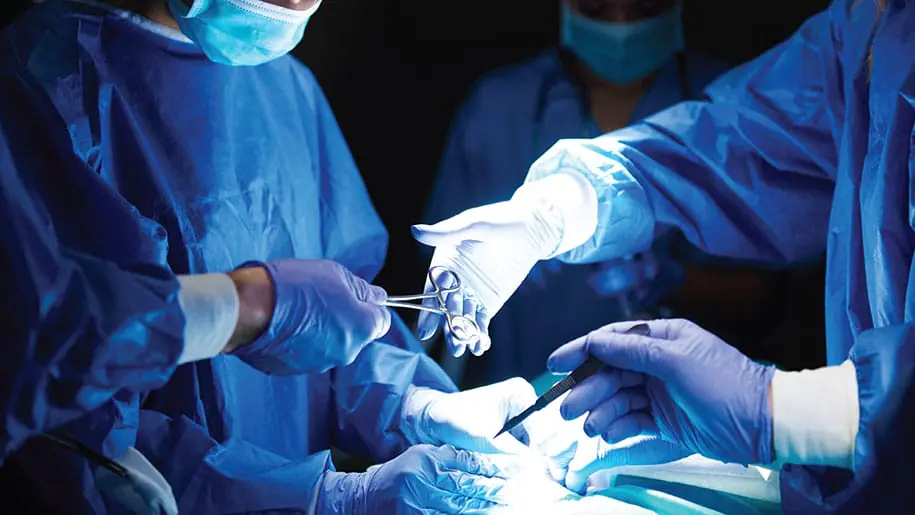
Surgical gloves are essential for preventing infections in the operating room (OR), thus protecting healthcare workers and patients. Their integrity depends on safety measures, such as stocking the right gloves, preventing perforations, and double-gloving. Proper storage supports these efforts by keeping gloves in top condition and ensuring surgical glove integrity.
Choose the Right Glove Materials
Choosing the right gloves for surgery is more complicated than ever. While latex gloves are preferred for their durability, flexibility, and precise feel, the prevalence of latex allergies requires gloves made of alternative materials. Nitrile, polyvinyl chloride, and polyurethane are some options for staff and patients with latex allergies.
However, latex-free gloves may not be as durable as latex gloves. A Perioperative Medicine study found that latex-free gloves were four times more likely to be perforated than latex ones. Staff who wear latex-free gloves should follow all sharps injury prevention protocols to prevent injury.
To maintain glove integrity:
- Store latex and latex-free gloves in storage cabinets clearly labeled to avoid mix-ups and ensure quick access.
- Train staff to choose materials based on durability and allergy needs.
- Consider stocking low-protein latex gloves to reduce the risk of latex sensitization.
Providing a choice of gloves allows staff to protect themselves and their patients without the concern for allergic reactions.
Prevent Perforations with Double Gloving
Glove perforations are common in the OR, where sharp tools and busy hands create challenges. Double-gloving is a key safety measure to protect glove integrity. A Journal of Advanced Nursing study found that double-gloving reduced perforations 25% compared to single-gloving. Most surgeons adapt to double gloving without losing dexterity.
The Association of periOperative Nurses (AORN), the Association of Surgical Technologists, and the Centers for Disease Control and Prevention (CDC) all recommend double gloving for all surgeries. OR managers can support this recommendation by:
- Stocking double-glove packs in OR storage systems for easy access.
- Ensuring staff follow AORN handwashing guidelines and check gloves for tears after donning and during use.
- Providing colored indicator gloves to help spot punctures quickly.
- Setting protocols to swap torn gloves using sterile technique, re-scrubbing if needed.
Double-gloving with inner indicator gloves reduces the risk of contamination and injury, potentially lowering infection rates and costs.
Harness New Tech and Training to Prevent Sharps Injuries
Needlestick and sharps injuries are common in the OR, especially among less experienced staff. A British Medical Journal (BMC) study found that 65% of workers with less than a year’s experience suffered needlestick or sharps injuries, even when provided with safety tools like retractable needles.
Lack of training may contribute to sharps injuries. A Journal of Hospital Infection study found that needlestick and sharps injuries increased after the introduction of safety-engineered sharps devices. The authors suggest integrating ongoing training into an injury prevention program to ensure that all staff use safety devices properly.
To protect glove integrity:
- Stock safety-engineered tools like blunt needles or auto-retracting lancets in secure storage for quick access.
- Consider upgrading to passive safety devices that don’t require the staff member to take additional action, like blunt-tip suture needles, auto-retracting lancets, and auto-retracting safety needles.
- Use a neutral zone on the surgical table to pass sharps.
- Provide ongoing training on the use of safety-tools.
These measures can help keep gloves intact and reduce the risk of injury.
Prepare for Long and Complex Surgeries
Long surgeries, such as joint replacements, involve sharp tools and bone fragments, increasing the risk of glove tears. A Journal of Hospital Infection study found triple gloving (with a liner) kept inner gloves intact, while 90% of outer gloves and 33% of liners tore. Ensure glove integrity during complicated surgeries by:
- Stocking double- or triple-glove sets in storage carts for high-risk cases.
- Changing gloves every 1–2 hours and using colored inner gloves to spot tears.
- Organizing storage carts to ensure quick glove swaps during long procedures.
Store Gloves to Last
Storage is a critical safety measure to maintain glove integrity. Heat, cold, sunlight, or dampness weaken materials, increasing the risk of tears. Ensure gloves are ready for use by:
- Maintaining a max 60% humidity and 72-78°F in surgical supply storage areas to protect materials.
- Storing gloves in enclosed, ventilated cabinets.
- Following the manufacturer’s storage guidelines and using the “first in, first out” stocking method.
- Keeping ORs stocked with labeled latex and latex-free gloves for fast access.
Surgical glove integrity relies on choosing durable materials, enforcing double gloving, using safe surgical tools, and preparing for long surgeries. Proper storage supports these measures by ensuring gloves are ready for safe use. OR managers can implement these safety measures to protect staff, patients, and the bottom line, keeping the OR safe and efficient.
Surgical Glove FAQs
References

Cindy Blye
Content WriterCindy Blye, BSN, RN, CCM is a Registered Nurse and Certified Case Manager. She is an Alumni of West Virginia University School of Nursing (BSN), and a member of the Association of Health Care Journalists and The Authors Guild.
